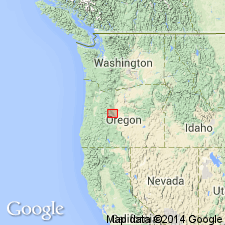
- Usage in publication:
-
- Desert Spring Tuff*
- Modifications:
-
- Named
- Dominant lithology:
-
- Tuff
- AAPG geologic province:
-
- Cascades province
Summary:
Desert Spring Tuff occurs in scattered outcrops and in excavations between Awbrey and Overturf Buttes eastward to Deschutes River, central OR. Consists of black to gray, dacitic, poorly welded tuff. Contains large black pumice fragments in pink, devitrified welded matrix concentrated in its lower part. [Presumably] overlies Deschutes Formation next to bridge over outlet stream from Upper Tumalo Reservoir. Alluvial gravels on Desert Spring Tuff are overlain by Bend Pumice (new). [Name, Desert Spring Tuff first used by Taylor (1980) in GSA Abstract where brief lithologic description and age can be found.] Is Pleistocene age.
Source: GNU records (USGS DDS-6; Menlo GNULEX).
For more information, please contact Nancy Stamm, Geologic Names Committee Secretary.
Asterisk (*) indicates published by U.S. Geological Survey authors.
"No current usage" (†) implies that a name has been abandoned or has fallen into disuse. Former usage and, if known, replacement name given in parentheses ( ).
Slash (/) indicates name conflicts with nomenclatural guidelines (CSN, 1933; ACSN, 1961, 1970; NACSN, 1983, 2005, 2021). May be explained within brackets ([ ]).

